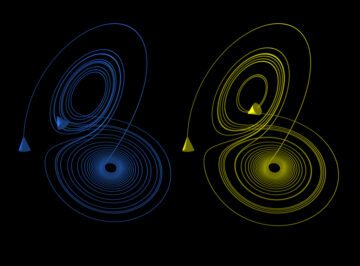Ira Silverberg at Vulture:
 Gary Indiana, who died on October 23 at 74 years old, was a brilliant and scathing critic of contemporary art and literature — and sometimes of those who thought they were his friends. His work at the Village Voice in the mid-to-late 1980s, when Jeff Weinstein edited him to perfect fever pitch, positioned him as the sharpest, most influential, and most feared art critic in New York of the time. It was a role that both defined and ruined him. He relied upon a persona that was about having come from nothing (not entirely the truth), knowing he wasn’t traditionally attractive to most men (he was short, skinny, and if he was ever a twink, those days were long past), was smart and used that to intimidate people, and eschewed money and fame (um, not really).
Gary Indiana, who died on October 23 at 74 years old, was a brilliant and scathing critic of contemporary art and literature — and sometimes of those who thought they were his friends. His work at the Village Voice in the mid-to-late 1980s, when Jeff Weinstein edited him to perfect fever pitch, positioned him as the sharpest, most influential, and most feared art critic in New York of the time. It was a role that both defined and ruined him. He relied upon a persona that was about having come from nothing (not entirely the truth), knowing he wasn’t traditionally attractive to most men (he was short, skinny, and if he was ever a twink, those days were long past), was smart and used that to intimidate people, and eschewed money and fame (um, not really).
Not exactly the usual art-world type, he left it and retreated into fiction, where he could work out his issues with characteristically dark humor in ultracontemporary social satires. He was full of contradictions, and his explanations of them were always brilliant and self-focused — plaintive, often exasperated wails from the last bohemian standing about the injustices he faced.
more here.
Enjoying the content on 3QD? Help keep us going by donating now.

 Approaching the age of twenty, Mondrian painted his most impressive painting to date. It was a still life of a dead hare. The animal hanging from its right hind leg is a feat of verisimilitude. The setting—the space above a wooden plank that recedes into a black background—is a triumph of austere elegance. The contrast between the luminous subject and the rich black presages Mondrian’s later abstractions.
Approaching the age of twenty, Mondrian painted his most impressive painting to date. It was a still life of a dead hare. The animal hanging from its right hind leg is a feat of verisimilitude. The setting—the space above a wooden plank that recedes into a black background—is a triumph of austere elegance. The contrast between the luminous subject and the rich black presages Mondrian’s later abstractions. The dawn of annoyingly massive satellites is upon us, shielding our views of the shimmering cosmos. Five of the largest communication satellites just unfolded in Earth orbit, and this is only the beginning of a Texas startup’s constellation of cellphone towers in space.
The dawn of annoyingly massive satellites is upon us, shielding our views of the shimmering cosmos. Five of the largest communication satellites just unfolded in Earth orbit, and this is only the beginning of a Texas startup’s constellation of cellphone towers in space. You can predict the outcome of the 2024 US presidential election by tracking the laughter in the room. Laughter glides on the edge of the unspeakable. It flirts with taboo obscenity and unbearable trauma while toeing the line and somehow lightening the tone. When Donald Trump absurdly accused Haitian migrants in Ohio of eating people’s pets, silly videos of
You can predict the outcome of the 2024 US presidential election by tracking the laughter in the room. Laughter glides on the edge of the unspeakable. It flirts with taboo obscenity and unbearable trauma while toeing the line and somehow lightening the tone. When Donald Trump absurdly accused Haitian migrants in Ohio of eating people’s pets, silly videos of  Seeing is believing. Our perception of the world heavily relies on vision.
Seeing is believing. Our perception of the world heavily relies on vision. I
I “Math is power” is the tag line of a new documentary, “
“Math is power” is the tag line of a new documentary, “ The 2024 election will be “decided by podcasts,” Bobby Kennedy
The 2024 election will be “decided by podcasts,” Bobby Kennedy  In 1990, Gibson and Bruce Sterling wrote “
In 1990, Gibson and Bruce Sterling wrote “ Harvard University reports engineering strategies, including solar radiation management, carbon dioxide removal, and ocean fertilization, that can
Harvard University reports engineering strategies, including solar radiation management, carbon dioxide removal, and ocean fertilization, that can  In their bid to become the next U.S. president, Democrat Kamala Harris and Republican Donald Trump have staked out fundamentally different positions on such divisive topics as reproductive rights, immigration, the economy, and the wars in the Middle East and Ukraine. But they have said almost nothing about science. That’s typical for a presidential campaign. But their silence doesn’t mean the winner of the 5 November election won’t have a significant effect on the U.S. research enterprise. Their views on science-heavy issues such as climate change and public health will get wide attention. But outside the spotlight, the country’s 47th president will need to address other issues that directly affect the research community.
In their bid to become the next U.S. president, Democrat Kamala Harris and Republican Donald Trump have staked out fundamentally different positions on such divisive topics as reproductive rights, immigration, the economy, and the wars in the Middle East and Ukraine. But they have said almost nothing about science. That’s typical for a presidential campaign. But their silence doesn’t mean the winner of the 5 November election won’t have a significant effect on the U.S. research enterprise. Their views on science-heavy issues such as climate change and public health will get wide attention. But outside the spotlight, the country’s 47th president will need to address other issues that directly affect the research community. H
H